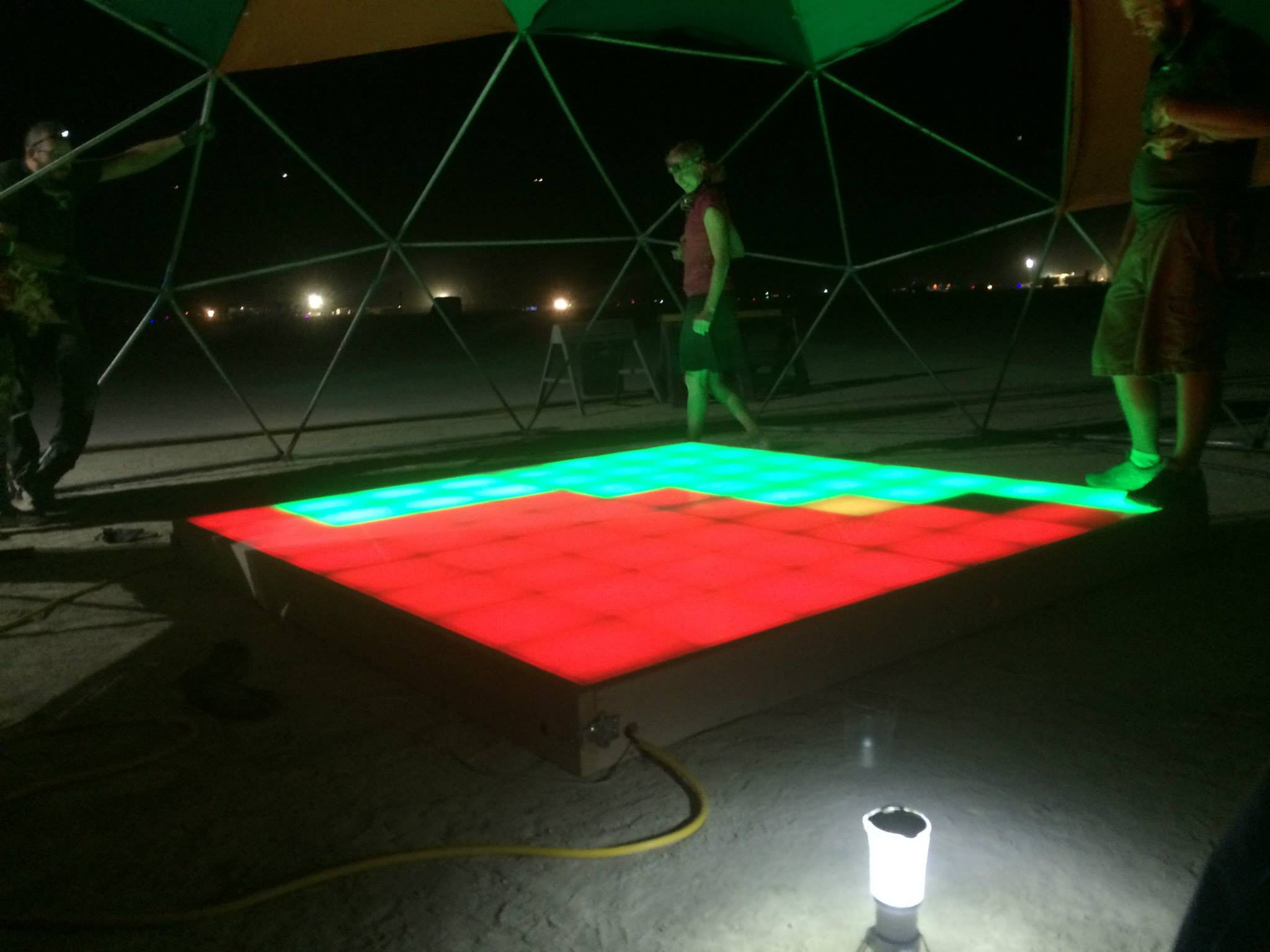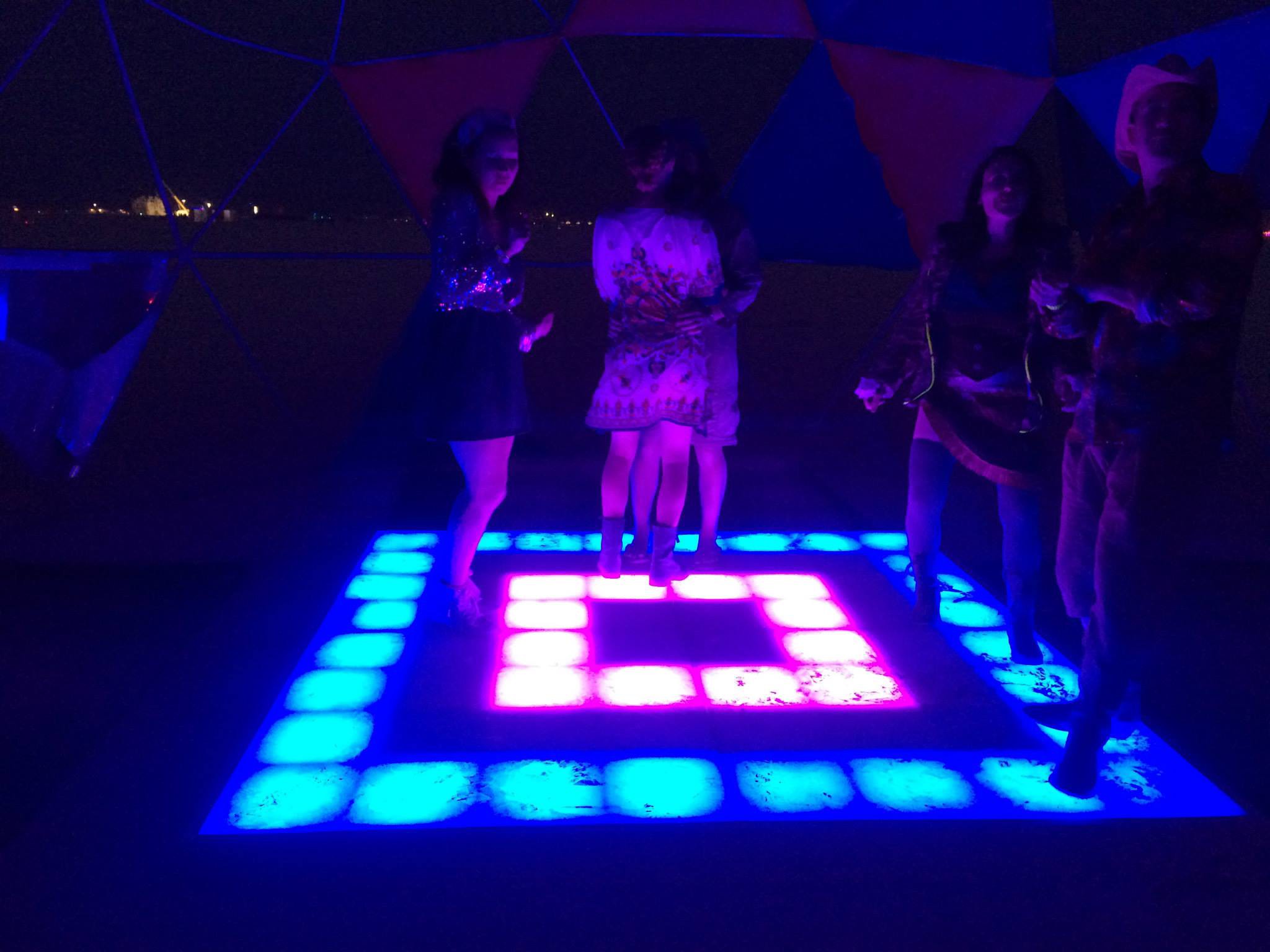Wow, it's been awhile since I've posted an update. So, you're probably wondering, how'd it go?

Burning Man Dance Floor Retrospective
The month leading up to burning man was a mad dash to finish the floor (and, you know, keep a day job). I didn't get much sleep during that time. It was build - test - build - test - eat. I kept running into issues with the capacitive sensors not providing readings that were stable enough at full-scale.
Everything would start off just fine, but then the sensors would randomly detect things when nothing was there and sometimes the sensors would trigger their neighbors. No amount of filtering would fix it. So, in the interest of getting something working, I dropped that feature from the list and, instead, added a microphone to the system so the floor could react to the music playing. Then we packed it all up and threw it on the truck for burning man.
The day finally arrived. We were on the Playa and setting up the floor. I was really nervous; I've seen many people waste most of their time out there trying to get their projects to work. I carefully plugged everything in, flipped the switch on the controller computer, and waited.
After a couple minutes, the computer finished booting and the floor flickered to life! It was an amazing relief and I let out a happy sigh! Throughout the week, whenever the floor came on, people would come, look at it and dance. No touch sensors, but it was still a huge success...but that's not the end of the story...



pictures from setting up and testing the floor
What's next? Burning Man 2016!
Well, I haven't given up on the capacitive sensors. As soon as I got back from Burning Man I started rewriting everything. I overhauled the communication protocol, played with the circuit design and started playing with different capacitive sensor methods. So far I've found that the QTouch library, provided by Atmel, works really well out of the box. I originally shied away from it because I was working in pure Arduinoland and hadn't worked with straight AVR C/C++. But now I've gotten over that hurdle and will be testing it on the full scale floors in the coming weeks.
I just received the new circuit boards in the mail yesterday and I can't wait to try it out.
Other Planned Changes
Along with getting the sensors working, there are a few other changes I'd like to address:
- Weight: The current floor sections are pretty heavy. I think I can cut this down considerably by taking at least an inch off the floor height and using a lighter base board.
- Outer Frame: The frame that holds the floor together works incredibly well, but is limited to an 8' x 8' square. I'd like to figure out a more modular way to hold the sections together and keep them level.
- Mounting the Acrylic: Currently the plastic surface is attached to the base grid with an industrial strength glue (stuff that's used to stick glass to the side of buildings). This worked well and provided a seamless surface, but it's starting to separate in some places. I think we might have to start using bolts to hold the plastic to the base.
- New Controller: Rebuild the controller softward using Electron and optimize it for a touch screen interface.
Market Street Prototyping Festival
I also submitted the project to the Market Street Prototyping Festival. They'll announce the project selection mid May (crossing my fingers!).
 Jeremy
Jeremy
Discussions
Become a Hackaday.io Member
Create an account to leave a comment. Already have an account? Log In.